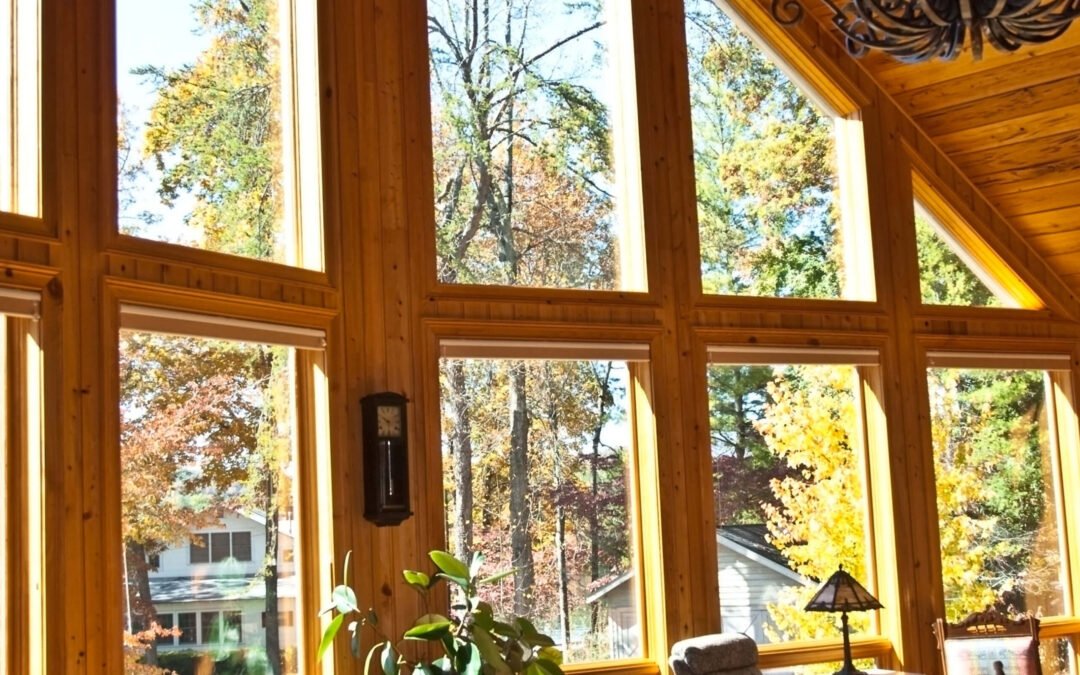With energy prices in the UK still fluctuating and more homeowners looking to reduce their carbon footprint, improving energy efficiency has never been more important. One of the most effective yet often overlooked ways to do this is by upgrading your windows.
New windows don’t just make your home look more attractive — they can significantly reduce heat loss, lower your energy bills, and make your living space far more comfortable year-round. In this guide, we’ll explore how energy-efficient windows work, what to look out for, and why now is a smart time to make the switch.
How Heat Escapes Through Windows
Windows are a major source of heat loss in the home, especially if they’re old, single-glazed, or poorly fitted. Even in homes with decent insulation, windows can account for up to 10–20% of total heat loss — and in older properties, it can be much higher.
Source: Energy Saving Trust
Heat escapes through windows in several ways:
- Conduction: Heat travels through the glass and frame materials and escapes outside.
- Convection: Cold air near a window cools down warm indoor air, creating draughts.
- Air leakage: Gaps around poorly sealed windows allow warm air to escape and cold air to enter.
Newer windows are designed to minimise all of these losses, helping keep your home warm in winter and cool in summer.
Understanding Window Energy Ratings
When shopping for new windows, you’re bound to come across a variety of technical terms. It might feel a little overwhelming at first, but understanding what these ratings mean can make a big difference — not only in your energy bills, but in the long-term comfort of your home.
U-Value
The U-value measures how easily heat passes through a window. The lower the U-value, the better the window is at insulating your home. A single-glazed window might have a U-value of 5.0 or higher — meaning it loses heat quickly. In contrast, modern double-glazed windows often come with U-values of 1.4 W/m²K or lower, and the best triple-glazed options can achieve 0.8 W/m²K or less.
Window Energy Rating (WER)
Developed by the British Fenestration Rating Council (BFRC), the Window Energy Rating (WER) is a colour-coded, A++ to G scale — similar to appliance labels. A-rated and above are considered highly efficient.
G-Value
The g-value refers to the amount of solar heat that passes through the glass. A higher g-value can help reduce heating bills in colder months by allowing the sun’s warmth to naturally heat the room.
Look for a combination of low U-values, high WER ratings and the right g-values to ensure optimum performance and energy savings.
What Do the Building Regulations Say?
When installing new or replacement windows, UK Building Regulations set minimum efficiency standards:
- Replacement windows in existing homes must have a U-value of 1.4 W/m²K or better.
- New-build homes must meet even stricter requirements — typically around 1.2 W/m²K.
From 2025, the Future Homes Standard will tighten these standards even further. This means that triple glazing is likely to become the new minimum for energy compliance in new homes.
Want to stay ahead of the curve? Choosing future-proof, high-performance glazing now can save time and money in the long run.
Source: GOV.UK Building Regulations – Part L
What Makes Modern Windows So Energy Efficient?
Today’s energy-efficient windows are a world away from the single-glazed units found in older homes. Through advancements in glazing technology and frame design, modern windows are now built to significantly reduce heat loss, eliminate draughts, and improve overall performance.
1. Low-Emissivity (Low-E) Glass
Low-E glass features an ultra-thin coating that reflects heat back into the home while still allowing light in. This helps retain warmth during winter and prevents excessive heat gain during summer.
2. Gas-Filled Cavities
The space between glass panes is filled with argon, krypton or xenon gas — all better insulators than air. These gases slow down heat transfer, keeping warmth in and cold out.
3. Double vs Triple Glazing
- Double glazing: Two panes with a single insulating gap — suitable for most UK homes.
- Triple glazing: Three panes and two gaps — ideal for maximum energy savings, noise control and future regulation compliance.
4. Warm-Edge Spacers
Traditional aluminium spacers conduct heat, but warm-edge spacers use thermally efficient materials like foam or plastic composites, reducing condensation and improving edge performance.
5. Insulated Frames
- uPVC: Multi-chambered for trapped air insulation.
- Aluminium: Includes a polyamide thermal break to stop heat transfer.
- Timber: Naturally insulating and ideal for heritage homes.
Together, these technologies form a highly efficient window system that keeps energy in and external elements out.
How Much Can You Save?
Replacing inefficient windows can save hundreds of pounds a year. According to the Energy Saving Trust:
- Replacing single glazing with A++ triple glazing in a detached home could save up to £395/year.
- Replacing older double glazing with new A-rated units can save around £120–£150/year.
Over 10–15 years, these savings add up. And as energy prices continue to rise, the return on investment gets even better.
Beyond just financial savings, your home will also feel warmer, quieter, and more comfortable.
It’s Not Just About Bills: Other Benefits
Energy-efficient windows bring a variety of lifestyle and environmental advantages:
- More consistent room temperatures, even near large windows.
- Less condensation, which helps prevent mould and damp.
- Better soundproofing, especially with triple glazing.
- Lower carbon emissions, reducing your environmental footprint.
If every UK home upgraded to modern glazing, it would prevent millions of tonnes of CO₂ emissions annually. It’s a small change that adds up to a big difference.
Are There Any Grants or Incentives?
While most window upgrades are self-funded, there are government schemes that may help — particularly if you’re combining new windows with broader home energy improvements.
1. Great British Insulation Scheme
Primarily focused on insulation, but may contribute to wider retrofit costs when part of an overall plan.
2. Home Upgrade Grant (HUG2)
Targeted at off-grid and low-income households, this scheme can cover windows in some cases.
3. Social Housing Decarbonisation Fund
Relevant for landlords and housing associations, this fund supports energy upgrades including windows.
You can check your eligibility on the official GOV.UK energy grants checker.
Not sure where to start? The Verandaluxe team is happy to help guide you through the available options and whether you might qualify.
How to Choose the Right Replacement Windows
It’s not just about choosing any window — the right replacement depends on your home, budget, and goals.
- Frame materials: Choose between uPVC (affordable and low-maintenance), aluminium (sleek and modern), or timber (perfect for period properties).
- Glazing options: Double glazing is sufficient for most homes; triple glazing is ideal for high performance and noise reduction.
- Installer credentials: Always work with a registered FENSA or Certass installer for guaranteed compliance and peace of mind.
Lastly, professional fitting is just as important as product quality — poorly installed windows can cause draughts and reduce efficiency.
At Verandaluxe, we specialise in supplying and installing high-quality, energy-efficient windows across the UK. Our team is fully Certass-registered and committed to delivering glazing solutions that don’t just look great — they perform brilliantly all year round.
The full range of windows we provide include uPVC, aluminium and timber windows.
We’ll help you choose the right material, frame style, and glazing type to future-proof your home while keeping it warm, quiet and comfortable.

